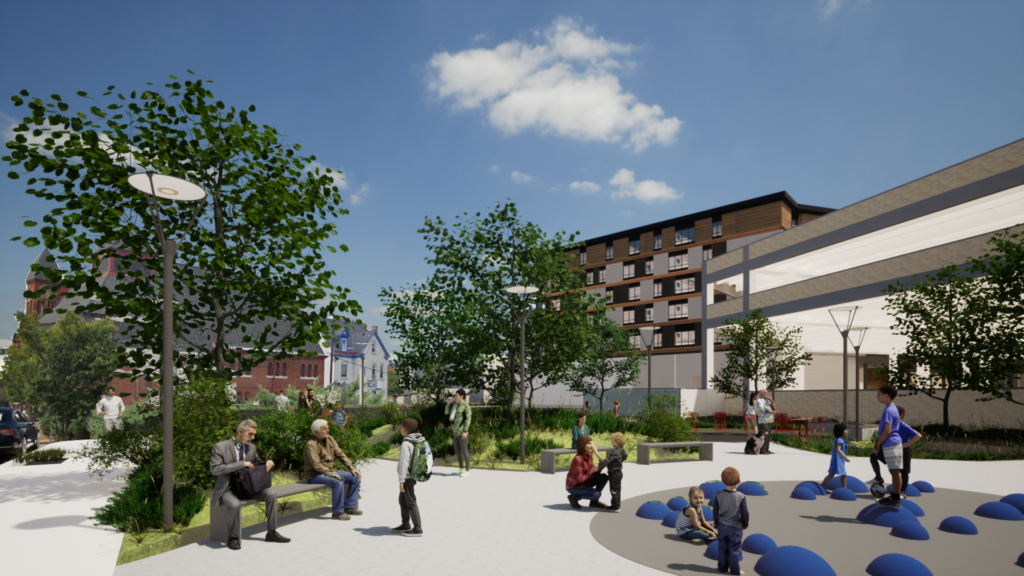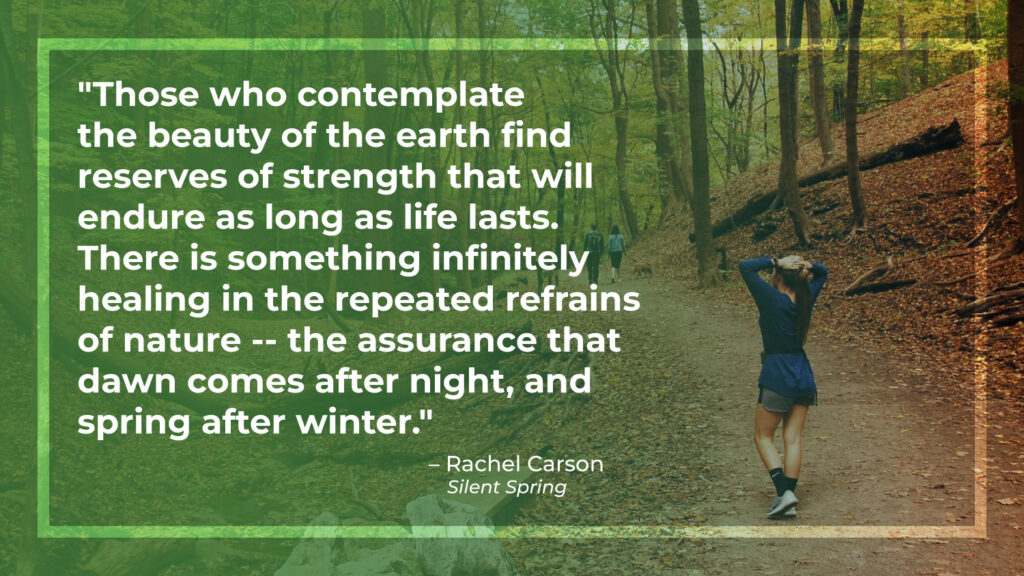Elena Alves, a talented Landscape Architect, has dedicated her career to transforming outdoor spaces into beautiful and functional areas that uplift and serve the communities they are designed for. With her keen eye for detail and a passion for creating big transformations and small moments of joy, Elena’s work is nothing short of awe-inspiring.
Recently, Elena shared her views on Environmental Justice as part of Strada’s DEI education series. In this interview, she will explain what Environmental Justice is, and how it intersects with her work as a Landscape Architect. So, sit back, relax, and join us as we delve into the fascinating world of Elena Alves and her mission to make the world a more beautiful and equitable place.
Environmental Justice is a big topic, but at its heart, it is the focus on the fair and equitable distribution of environmental benefits and burdens. This can mean equal access to parks & shade, multi-modal streets, and multi-benefit infrastructure. It’s about designing innovative alternatives to imagine a more healthful means of existence, as well as addressing the disproportionate effect of environmental burdens on minority communities.
The connection to nature through green “third places” changes with the seasons. It decreases with fall and rises with spring. Ray Oldenburg’s theory on the importance of a third place explains that humans generally have two base places that equate to home and work, and that a tertiary space is necessary for community, education, and engagement. Living in 2023 means those first two places are also overlapping more, making a third place, and especially a green third place, all the more important. It can be a community center, a park, or even a stoop or bench in the right spot.
What’s something Strada is doing right now that reflects these ideas and goals?
The Meridian project is a great example of our constant responsibility to environmental justice.

In the pursuit of creating more beautiful and functional spaces, sometimes the process of development can inadvertently impact the community that it serves. The Meridian project involves the transformation of a large space that serves multiple neighborhoods, which has led to the temporary closure of a much-relied-on grocery store and impacted public transportation. However, working alongside Echo Realty, we have been able to mitigate the effects of the construction gap on the community’s access to necessities. Echo Realty has demonstrated a deep understanding of the moral imperative of the developer at the community level and has gone above and beyond to provide bus passes for local residents and involve a local grocery program. This real-time responsiveness and commitment to justice is a testament to how developers can give back to the people their buildings serve, and it’s just one example of the many ways that Strada is working to create meaningful experiences through design.
The space itself aims to improve access to necessities, but also to green spaces. Practicality is served with shade elements, including a dense tree canopy, to reduce temperature and improve air quality. The people we design for deserve connections to nature, for their physical and mental well-being. Pittsburgh encourages the improvement of green space access, making Landscape Architects more vital to the design and construction process.
What can a designer do to support Environmental Justice?
Firstly, reject the notion that there is a “correct” use of outdoor space. People are unique and diverse, and creating space that nurtures this reality results in spaces that come alive. #DesignWithPeopleInMind®
If a space is meant to be used by the public, we design towards engagement and comfort. Seating, shade, nooks for interaction, larger spaces for activity, sound buffers from main streets, and minimizing the potential maintenance are just some of the things landscape architects consider.
Understanding that landscapes tell the history of a space informs change. Where is this landscape inclusive? What aspects were created to be exclusionary? What dreams and fears have driven changes in the past, and how do we want to dream without fear in the future? Working-class areas often have higher population densities, smaller lot sizes, and disproportionate flooding. Industrial processing and runoff are often in lower-income areas. All of these issues stem from past decisions made oftentimes with profit in mind, not people.
The link between nature and mental health gives my voice strength when I speak with clients about green spaces. Humans lose themselves when they lose their connection to nature, so I encourage grounding and mindfulness of the environment in design. Planting in natural ways with native plants enhances our bond with our environment, and encourages an authentic biome.
As we recognize the many small decisions that have built up into larger issues, it’s important for us, as designers, to be willing to try, to take one piece off of the pile at a time until the larger issues diminish and we have a more holistic view of what it means to be a human in a just environment.
What’s something the average person can do to appreciate and understand environmental justice?
Get outside! Feel the grass under your feet, listen to the sounds around you, and allow yourself to simply be. Take a deep breath of the serenity of nature, and be grateful for the space you’re in. Once you notice how sweet the connection can be, you’ll see where it’s missing, and that’s where you should pay close attention.
Do you have a favorite “third space” in Pittsburgh?
Probably Frick Park. I love parks in general, and I know I was lucky during the pandemic to live near a park. Having that connection to nature keeps me grounded and energized to do the important work I get to be a part of with Strada.

